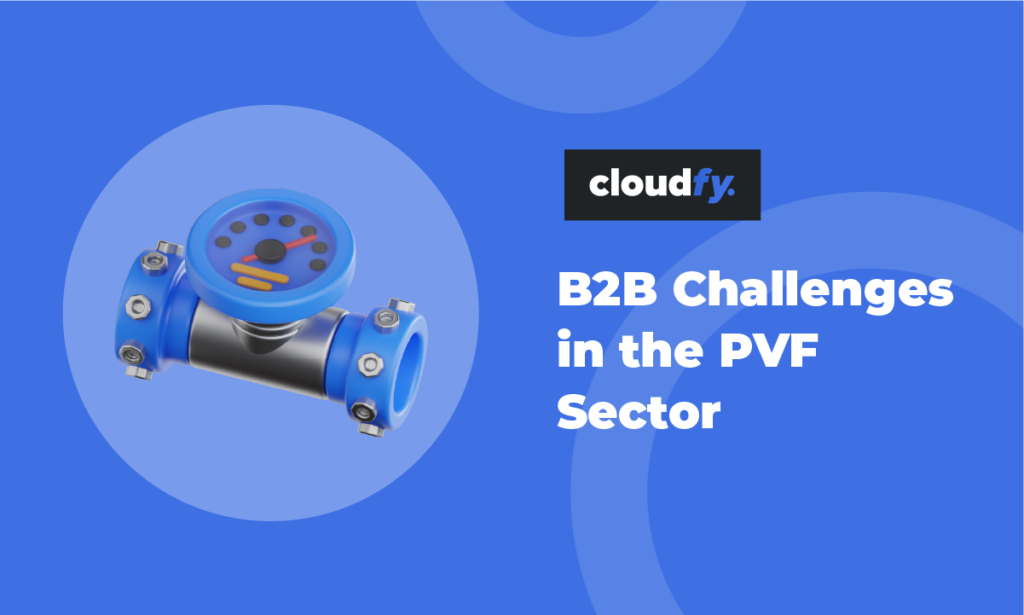Total cost of ownership (TCO) is one of the biggest considerations when you are planning to create a new business to business (B2B) ecommerce website or to replace an existing one.
You will need to think about a lot more than the launch costs. You will find that different solutions can vary a lot, once you have taken everything into account.
With more online business buying than ever before your choice of platform and delivery partner is critical to your success. That’s why Cloudfy has been designed from the outset to offer outstanding value for money for B2B ecommerce.
Choosing the right type of ecommerce platform
There are many different ecommerce platform options available and all will have benefits to offer you. Here are the three main types of platform you can choose.
1. On-premise ecommerce – owning and controlling your ecommerce platform at your own premises can be attractive, especially if data security is a high priority for you. You can customize your platform and integrate it with your existing business processes.
If you already have an in-house data center and your IT team have the experience and expertise to host and manage your ecommerce site, it might be tempting. However, when you include the overall costs of hosting, staff, security, and penetration testing, the costs quickly increase.
It’s also worth considering that your in-house customization could leave you with problems when upgrades are needed. If you work with a delivery partner, you could find yourself dependent on them or facing and expensive and time-consuming project to move on.
You will also be reliant on your partner or your in-house resources to make any changes that will help you to secure that all-important competitive advantage, with additional costs involved in development, installation, testing, deployment and, where necessary fixing, along the way.
2. Separate online storefront – sometimes known as headless ecommerce, you can present your ecommerce functionality, such as product views, stock keeping units (SKUs), cart, and checkout separately from your content management system (CMS) and customer relationship management (CRM) system.
With a headless approach, your developers can use application programming interfaces to create your online experience without having to worry about integration with your back-office systems. This can be a flexible, customer-focused approach that’s appealing because micro-sites, marketing campaigns and micro catalogs can be easily integrated into your existing infrastructure.
However, you will be responsible for security, payment card industry (PCI) compliance and fraud detection. There’s also significant effort needed to build and maintain a fully headless ecommerce experience. You will rely on your in-house team or development partner to keep your customized solution running and to keep pace with the latest innovations.
3. Software as a Service – a Cloud-based, multi-tenant solution can deliver ecommerce software as a service (SaaS). It offers a wide range features and the ability to customize the look and feel of your site to suit your brand.
Because the software is in the Cloud, new features can be delivered continuously, and hosting is part of the offer. You won’t have to wait for new features to be developed, installed and tested, that will all be done for you.
SaaS providers must make security a priority because it is a core part of their business. Fast page load times and scalability are also attractive features that come as standard with a SaaS solution.
SaaS ecommerce sites can be launched quickly and will come with most of the standard ecommerce functions you need. This allows you to use your resources elsewhere to improve integration and enhance your fulfillment and supply chain, for example.
An important consideration is how fees for a SaaS solution are structured. In some cases, this will involve paying percentage of each transaction value, or it could be a monthly fee that can be scaled up in bands to grow with your business.
Choosing an ecommerce partner
While it might be reassuring to work with a partner that has experience in your sector a strong ecommerce track record across industries will be more important. Look for evidence of successful delivery and an understanding of clients’ objectives.
Developing a solution that’s right for your business is part of your overall TOC, and it can be expensive, so it’s important to work with a team that will understand what you want to achieve.
Why Cloudfy can deliver lower TCO
Experience – Cloudfy has over ten years’ experience of running and supporting businesses from many different sectors. Our team of experts work closely with our clients to deliver the right solution professionally and effectively.
Ecommerce performance – Cloudfy has been designed from the outset to deliver exceptional B2B ecommerce performance, straight out of the box. This means you will require less customization, saving you time and money.
Integration – most importantly, Cloudfy offers integration with most major business systems so that you can deliver seamless customer service, personalization and real-time information without having to re-engineer your business processes.
Flexibility – when customization is needed, Cloudfy offers a powerful application programming interface (API) and flat file integration as well.
Fast delivery – your new Cloudfy website can be delivered in a matter of weeks rather than months or even years, so you can be ready to take advantage of opportunities in your sector more quickly than your competitors.
Cost-effective – as a SaaS solution, Cloudfy is available on a subscription basis and can be scaled as your business grows, so you don’t have to invest in infrastructure and capacity that you don’t need.
Secure – security is a core part of our business, so we are constantly scanning for PCI compliance and our quality assurance team test all changes before they are deployed. We don’t hold payment data; this is processed by third-party providers with the highest levels of security compliance. It’s just one more issue that you don’t need to manage.
Evergreen – once your site is launched, Cloudfy’s regular upgrades and any necessary fixes are deployed in the Cloud and immediately available for you to use. You can be confident that your site will remain at the leading-edge of ecommerce functionality.
We’ll be happy to tell you more about Cloudfy’s lower total cost of ownership. Please get in touch.






